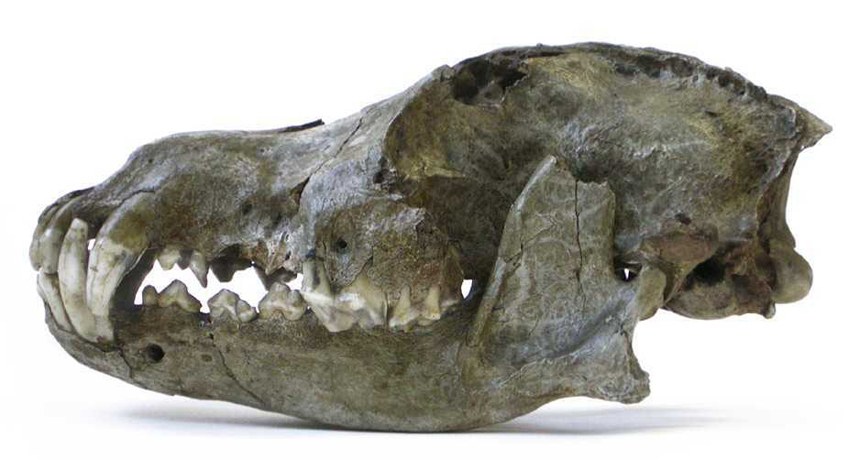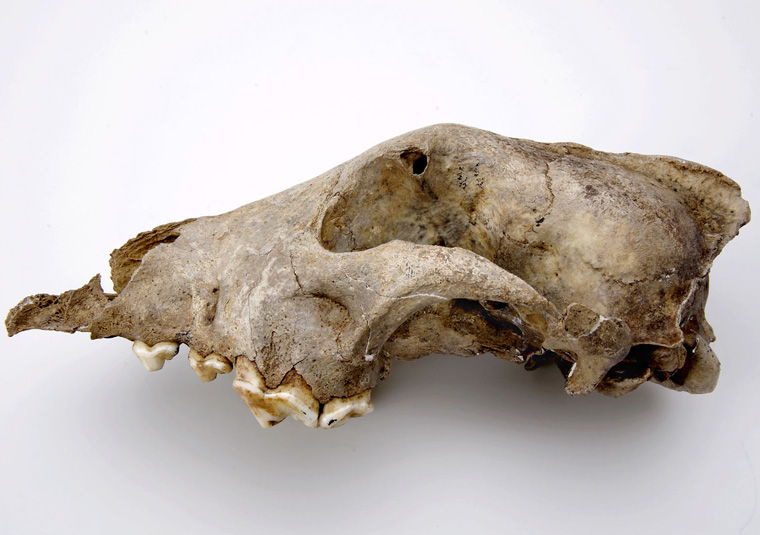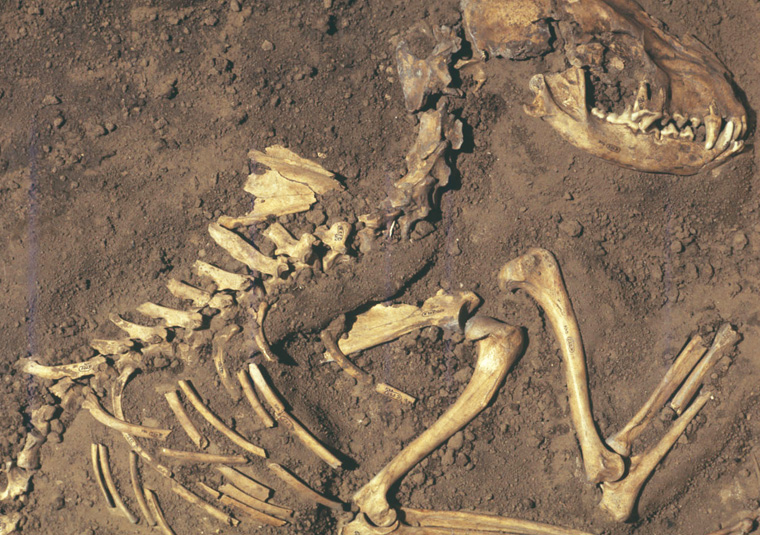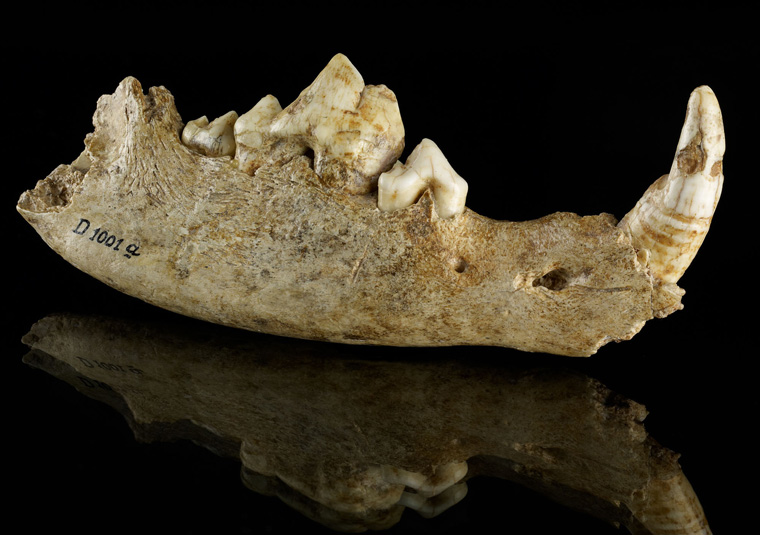
OLD DOGS Analysis of DNA from fossils, including this 26,000 year-old wolf skull found in the Trou des Nutons cave in Belgium, reveals that canines were probably first domesticated in Europe.
Courtesy of Royal Belgian Institute of Natural Sciences
- More than 2 years ago
Dogs and humans became best friends in Europe more than 18,000 years ago. That’s the conclusion of a genetic study of dogs and wolves, both ancient and modern.
The time and place of dog domestication have been hotly debated, with genetic studies and archaeological finds often seeming to contradict each other. Fossils from Europe had suggested doglike creatures existed there for about 30,000 years. But some genetic studies placed the birth of domestic dogs in China or the Middle East (SN: 4/10/10, p. 12). Previous genetic studies have compared DNA from living dogs and wolves, but those efforts generally did not include ancient DNA.
Now, Olaf Thalmann of the University of Turku in Finland and colleagues have examined genetic material from fossil dogs and wolves, as well as from living animals. “The genetics point toward Europe” as the center of canine domestication, Thalmann says. Hunter-gatherers domesticated dogs from European wolves between 18,800 and 32,100 years ago, the researchers report in the Nov. 15 Science.
“This is older than farming,” says study coauthor Beth Shapiro, a paleogeneticist at the University of California, Santa Cruz. The team also found evidence suggesting that dogs accompanied the first people to settle in the Americas.
The study is a big step forward in understanding how dogs came to live with humans, says Greger Larson, an evolutionary biologist at Durham University in England. A better understanding of dog domestication could give researchers insight into the minds of ancient people who, after nearly 200,000 years of going it alone, took animals as companions. Domesticating wild canids might have primed conditions for agriculture and set the stage for other innovations, he speculates. “Part of me wonders, if you didn’t have dogs how much longer would it have taken to domesticate other animals?” he says.
In the study, the researchers examined mitochondrial DNA from 18 ancient canids. Mitochondria are energy-producing cell organelles that females pass to their offspring. Mitochondrial DNA allows researchers to trace maternal ancestry.
The ancient DNA data were compared with mitochondrial DNA from 49 wolves, 80 dogs of various breeds and four coyotes. Dogs, the team found, fall into four major mitochondrial lineages. Those four groups are more closely related to ancient European wolves than to living ones, lending support to a report this year that a now-extinct wolf may be the ancestor of dogs (SN: 7/13/13, p. 14).
Some of the ancient dogs, namely a 36,000-year-old fossil called the Goyet dog from Belgium and a 33,000 year-old fossil dog from Siberia’s Altai Mountains, don’t have any modern dog descendants, possibly indicating failed attempts at domestication.
That result doesn’t surprise Susan Crockford, a zoologist and evolutionary biologist from the University of Victoria in Canada. “The idea of multiple domestication events, with some of them perhaps being dead-ends, is essential to the dog origins story,” she says. Other animals, including pigs, sheep and cattle, were independently domesticated multiple times. Dogs are probably no different, with multiple domestication pushes in Europe and Asia but only European dogs giving rise to modern breeds.
Dog domestication probably wasn’t a deliberate act, Crockford says; rather, conditions created by people living in permanent settlements would have allowed wolves to naturally develop doglike physical and behavioral characteristics. That makes her question the dates in the new study because she says Ice Age hunter-gatherers were too mobile to have forged the ecological conditions necessary for such a transformation.
The researchers acknowledge that they traced only maternal heritage. “Mitochondria give a limited vision of what has happened,” Thalmann says. Some of his colleagues are attempting to isolate DNA from ancient specimens’ cell nuclei, where the main bulk of genetic instructions are stored. “Nuclear DNA might have some very interesting surprises, but we can’t foresee them,” he says.
Larson doesn’t expect dogs’ nuclear DNA to tell a completely different domestication tale, “but it will be a considerably more nuanced one.”









